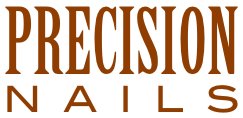If experience were the best teacher, the beauty industry would have no need for formal education. Those interested in becoming a nail professional would purchase supplies, open for business and practice their manicuring skills on unsuspecting clients. In time, they might learn how to do quality work (without hurting their clients) and succeed financially, but that’s not very likely. Experience can be the most inefficient, unreliable and dangerous way to learn, and some manicurists will never become skilled or successful, no matter how much experience they have.
Quality education should be the foundation of our technical expertise; hours of direct instruction/guided practice can easily supersede years of trying. But if education has this potential, why do educators complain that it’s hard to fill classes while manicurists complain about the lack of education? Instead of complaining, we should consider how we can mutually benefit from the learning process. Beyond the mere transfer of knowledge, we can explore new ideas, solve problems, inspire each other and advance the professionalism of our industry. By following education etiquette, both students and educators can play their respective roles:
For Students
- Find available classes by researching the internet, reading industry publications and contacting manufacturers, distributors, show/event organizers, educators and other nail professionals.
- Watching videos and participating in webinars can be done anywhere, but plan to travel to attend classes in person.
- Register in advance, if required, otherwise the class may be cancelled for lack of interest. If you pay for a class and don’t attend, don’t expect a refund.
- Bring any required supplies, as directed by the educator.
- Arrive early and sit near the front of the room to limit distractions.
- Be prepared to take notes, either with pen/paper or electronic device. Ask permission before taking photographs or making any audio/video recordings. The content belongs to the educator, not the students.
- Silence your cell phone.
- Remember that if you’re not the educator, you’re a student, so behave accordingly. Understand that your background knowledge/experience differs from other students and be supportive of your educator’s efforts to include everyone.
- Reserve your questions/comments until the end of the class; don’t be that obnoxious student everyone dreads.
- Thank your educator. Some are paid to present classes, but many donate their time and travel expenses.
- Focus on informing rather than selling; students will respect you more.
- Plan shorter rather than longer classes, especially at events that have multiple attractions, like a full schedule of classes, nail competitions and a bustling exhibit floor.
- Allow enough time to cover your topic adequately. In my opinion, a lecture class is ideally 60-75 minutes long. For a demonstration class, I allow twice the time it takes to perform the actual task, and for a hands-on class, triple the time.
- Make the title of your class brief and relevant; write a description (less than 100 words) that accurately represents the content.
- Promote your class through your website, social media, email, print media etc. to reach as many potential students as possible.
- Avoid canceling classes; should this happen, announce it immediately and promptly refund any payments.
- Visit your classroom the day before, if possible, to preview the location and layout. Confirm that any signage is correct.
- Know how to operate whatever equipment you plan to use (lighting, laptop, projector, video camera, etc.), whether it belongs to you or the facility.
- Be kind to all event staff (management, decorators, audio-visual experts, room monitors and janitors); you never know when you’ll need their help.
- Get your rest and eat something beforehand to maintain your energy. Have water available for the occasional dry mouth or inopportune cough.
- Arrive early so you can be prepared to start on time.
- Project your voice with confidence; not every classroom will be equipped with a microphone.
- Remind your students to silence their cell phones, and instruct them to either ask questions throughout or save them for the end, whichever you prefer.
- Briefly introduce yourself; don’t assume everyone knows who you are.
- Structure your content logically and make it accessible so students can listen, observe, read and/or experience the information.
- Be enthusiastic, no matter how many students you have.
- Engage your students by making eye contact and speaking from bullet points rather than reading a script.
- Adapt your content to the knowledge level(s) of your students to make everyone feel welcome.
- Control your class by staying on topic and not allowing disruptions. You’re entitled to ask any disruptive student (tardy, chatty, disrespectful, confrontational, etc.) to leave the classroom; other students will appreciate your assertiveness.
- Thank your students for their time and attention. Give them your contact information so they can ask questions later and learn about future classes.
- Invite more experienced educators to attend your class and provide feedback.
- Be courteous to other educators, particularly those sharing the same classroom: end your class on time, clear out quickly and don’t leave a mess.



